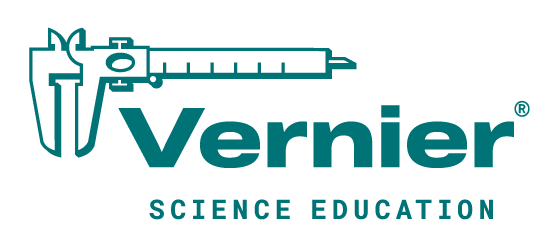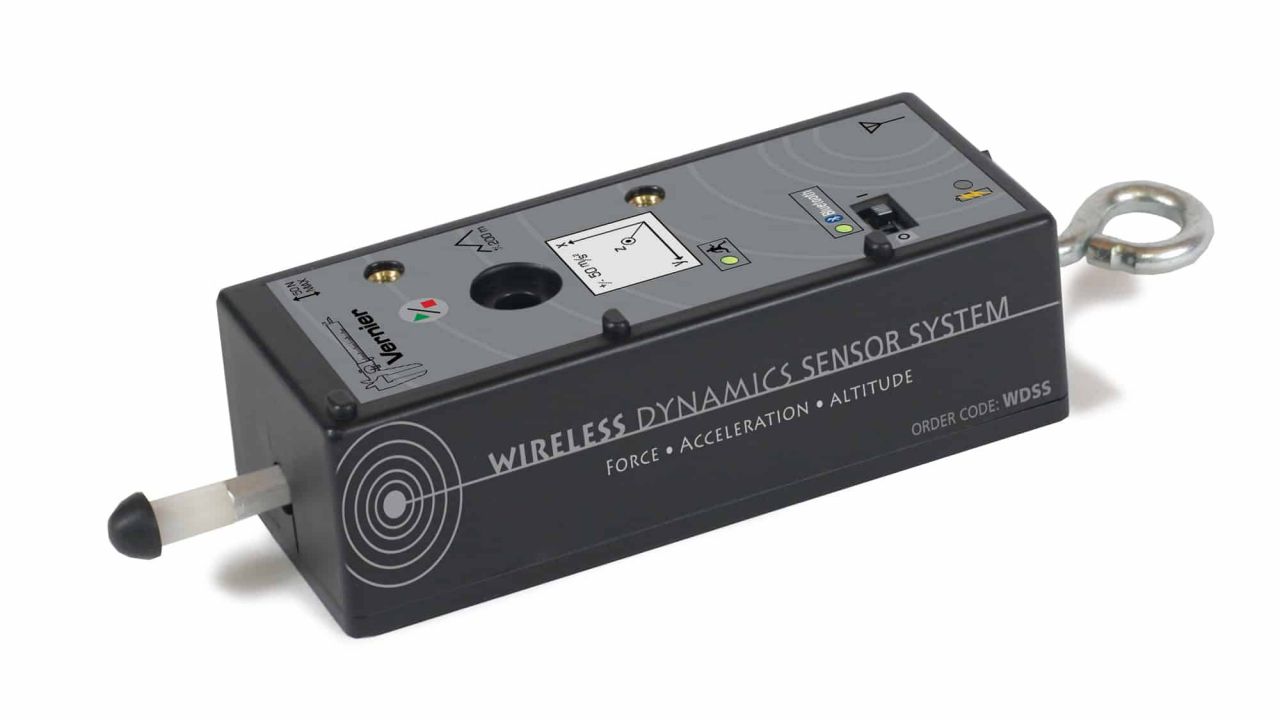This sensor is no longer available. Information is presented for reference only.
Note: The WDSS is not compatible with macOS 11 and newer.
Troubleshooting
- Primary Test: There is extensive information on installing Bluetooth radios and establishing radio communications with WDSS, see Bluetooth Help and Troubleshooting Tips related to the Wireless Dynamics Sensor System (WDSS)
- Secondary Test: Once communication is established, do the following:
- Choose Set Up Sensors –> WDSS:(name) from the Experiment menu.
- Click Identify; Run light will blink on WDSS.
- Click Manage Memory; you will see any stored runs existing on the device.
Check the Delete boxes and click OK if you want to clear the memory; otherwise just click OK. - Enable all five sensors by placing a check in each checkbox, then click Close. You should see five meters on screen.
⚬ Push and pull force sensor; does reading change?
⚬ Hold WDSS so each of x, y and z axes are up; does meter read about 9.8 m/s2 in each case?
⚬ Altimeter will read near zero, but cannot be easily tested indoors.
Note: if you last used a particular WDSS with only some of the channels active, the next time that computer detects that WDSS, only those channels will be active.
Sensor Compatibility
Choose a platform below to see its compatibility requirements.
LabQuest
| Interface | LabQuest App |
|---|---|
| LabQuest 3 | Full support |
| LabQuest 2 | Full support |
| LabQuest | Full support 1 |
Compatibility Notes
- Requires a Bluetooth USB Adapter (discontinued)
Computers
| Software | ||
|---|---|---|
| Interface | Graphical Analysis | Logger Pro (discontinued) |
| No interface required | Incompatible | Partial support 1 2 |
| LabQuest 3 | Full support 3 | Incompatible |
| LabQuest 2 | Full support 3 | Incompatible |
Compatibility Notes
- Requires a Bluetooth USB Adapter (discontinued) when used with some computers
- Bluetooth connection not compatible with macOS 11 and newer.
- Full support of this sensor is only available when LabQuest 2 or LabQuest 3 is connected via Wireless Data Sharing. The software does not support this sensor when connected via Bluetooth.
iOS
| Software | ||
|---|---|---|
| Interface | Graphical Analysis | Graphical Analysis GW |
| LabQuest 3 | Full support 1 | Full support 1 |
| LabQuest 2 | Full support 1 | Full support 1 |
Compatibility Notes
- iOS and Android™ devices can only connect to LabQuest 2 or LabQuest 3 via Wireless Data Sharing.
Android
| Software | ||
|---|---|---|
| Interface | Graphical Analysis | Graphical Analysis GW |
| LabQuest 3 | Full support 1 | Full support 1 |
| LabQuest 2 | Full support 1 | Full support 1 |
Compatibility Notes
- iOS and Android™ devices can only connect to LabQuest 2 or LabQuest 3 via Wireless Data Sharing.
LabVIEW
| Software | |
|---|---|
| Interface | NI LabVIEW |
| No interface required | Full support |
Additional Troubleshooting
- Logger Pro sees my WDSS by name, but then fails to collect data.
- Bluetooth Wireless FAQs
- How good is the time sync between WDSS and other interfaces?
- Will LabQuest work with the Wireless Dynamics Sensor System?
- Why is the WDSS run LED red?
- Is there a way to force my bluetooth radio to load the Microsoft driver?
- How good is synchronization between two WDSS? Good enough for impulse experiments?
- Where is the accelerometer located inside the WDSS?
- Can a Wireless Dynamic Sensor System (WDSS) communicate with mobile devices running Graphical Analysis app?
- Problems with force sensor giving bad readings because hex barrel has been removed and improperly reinstalled.
- How do I connect a Wireless Dynamics Sensor System (WDSS) to a PASCO cart?
- Can I use an accelerometer to measure velocity or position?
- What does an accelerometer actually measure?
- My force sensor fell into the floor, and now the hex bolt sheared off inside the load cell.
- Is there a replacement for BLUE-USB that can be used with WDSS or LabQuest Stream?
Specifications
Device
- Dimensions: 121 mm x 53 mm x 39 mm
- Mass: about 200 g, depending on battery type used and attachments
- Batteries: 3.7 volts, 1600-1800 mAh, Li-Ion rechargeable with safety circuit
- Operating Current: 35-50 mA @ DC minimum 3.2V
- Nominal Charging Current: ~350 mA
- DC input, Rating: DC 6V 500mA maximum (Max. with battery charging and unit operating)
- Bluetooth radio frequency: approximately 2.45 GHz (2450 MHz), with frequency hopping, so the frequency is not fixed
- Wireless Range: Up to 10 meters (30 ft) with no obstruction.
- Number of WDSS devices that can be connected to one computer: 7
Note: Lithium ion batteries self-discharge about 5 to 10% of its stored charge each month until approximately half depleted. This is normal. Disconnecting the battery will not change this.
Force Sensor
- Range: ±50 N
- Frequency Response: 0-100 Hz
- Resolution: 0.006 N(<10 N), 0.03 N(>10 N)
Accelerometers (for each of the three accelerometers):
- Range: -60 to +60 m/s^2
- Accuracy: ±0.4 m/s^2 (±0.05 g)
- Frequency Response (maximum): 100 Hz
- Temperature Range: -40 to +85°C
- Accelerometer location: 54 mm from the force sensor end of the base, 24 mm above the bottom, and on the midline.
Altimeter
- Altitude change range: ±200 m (1000 ft)
- Sensitivity: 1 meter
- Combined linearity and hysteresis: typical ±0.1% full scale, maximum ±0.5% full scale
- Response time: 0.5 second
Calibration
Calibrate this sensor? No, calibration of this sensor is not normally needed or advised. The sensor is set to the stored calibration before shipping. See Specifications and User Guide for detailed calibration information.
Related Products
- 3-Axis Accelerometer (
3D-BTA ) - Dual-Range Force Sensor (
DFS-BTA ) - Go Direct® Force and Acceleration Sensor (
GDX-FOR ) - Go Direct® Acceleration Sensor (
GDX-ACC )
Replacement Parts
- WDSS Rechargeable Battery (
WDSS-BAT ) - Power Supply for LabPro, WDSS, and Stir Station (
IPS )

